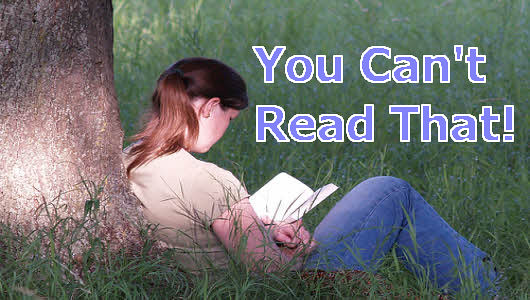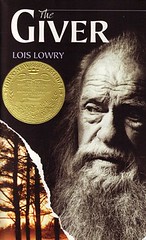You Can’t Read That! is a periodic post featuring banned book reviews and news roundups.

Arizona
Banned Books Week had a special resonance here in Tucson, where we wear the scarlet letter of shame over one of the nation’s most infamous cases of book banning, a banning made all the worse by the racism that motivated it. Here’s a great editorial from the University of Arizona’s Daily Wildcat.
Elsewhere
“…The mercenary process of producing and distributing obscene literature is immoral and noxious, is an offense against civilized society, is a thing to be punished, prohibited, and prevented.” The year was 1911, and Harvard President Charles W. Eliot was addressing the 33rd annual meeting of the Watch and Ward Society.
The children’s book I mentioned in my last banned book post is safe in Brentwood, Missouri … for now.
A California high school is considering banning Stephen King’s short story collection Different Seasons over a rape scene. Say what? California? High school? Sigh. More on Stephen King, a frequently banned and challenged author.
Now this is the kind of faith-based community action I like to see: church teaches class on banned books in defiance of local school district.
The headline says it all: Internet anti-censorship tools are being overwhelmed by demand.
Sometimes the impulse to ban bullying in schools and universities leads to restrictions on speech. How long before the same well-meaning people impose restrictions on the kinds of books students can read? It’s already happening. Witness the recent bowdlerization of Huckleberry Finn. And now a Canadian publisher has “disappeared” Santa’s pipe. Hmm … wouldn’t Virginia Wolfe be a lot less frightening if she didn’t curse so much?
Nearly 20 years later, author Lois Lowry publishes a sequel to the famous and frequently challenged young adult novel The Giver. Here’s my short review of The Giver, written shortly after I began reading and reviewing banned books on this blog:
 The Giver, by Lois Lowry
The Giver, by Lois Lowry
![]()
This was a fun, engaging read, a Margaret Atwood-style near-future story of a heavily-regulated conformist dystopia and a young teenager’s dawning awareness of other possibilities, other ways to live. Although The Giver is aimed at teens, it’s a satisfying and memorable read for adults.
The Giver seems to me to be a book the kind of people who ban books would love. It’s a celebration of freedom, for goodness’ sake, and a ringing endorsement for the presence of God in human affairs. So why is it so often challenged at school board meetings across the land? Because “the community” — the dystopia in which the story takes place — practices euthanasia and infanticide. For the curious, here is a detailed summation of parental challenges to The Giver.
Children, of course, are plenty tough enough to read The Giver, and I can’t think of a child anywhere who wouldn’t benefit from reading it. Or many adults, either.